Monthly Archives: June 2024
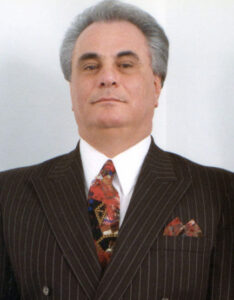
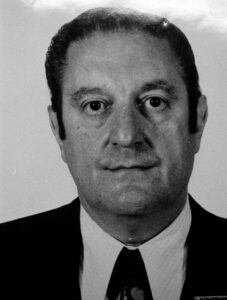 Mafia boss John “Teflon Don” Gotti, so nicknamed after escaping unscathed from several trials during the 1980s, seemed like a guy who was impossible to convict. Gotti was born and educated in New York City. He became head of the powerful Gambino family after boss Paul Castellano was murdered outside a steakhouse in Manhattan in December 1985. There had not been a gang assassination in New York in three decades. Gotti and his colleague Sammy “The Bull” Gravano changed all that. The Gambino family was well-known for its illegal narcotics operations, gambling activities, and car thefts. When Gotti took over, he wanted to show his new-found power, so he expanded the criminal empire over the next five years. Under Gotti, the family grew into the nation’s most powerful Mafia family.
Mafia boss John “Teflon Don” Gotti, so nicknamed after escaping unscathed from several trials during the 1980s, seemed like a guy who was impossible to convict. Gotti was born and educated in New York City. He became head of the powerful Gambino family after boss Paul Castellano was murdered outside a steakhouse in Manhattan in December 1985. There had not been a gang assassination in New York in three decades. Gotti and his colleague Sammy “The Bull” Gravano changed all that. The Gambino family was well-known for its illegal narcotics operations, gambling activities, and car thefts. When Gotti took over, he wanted to show his new-found power, so he expanded the criminal empire over the next five years. Under Gotti, the family grew into the nation’s most powerful Mafia family.
Over the years he was in charge, Gotti managed to avoid conviction several times, despite wide publicity of his criminal activities. Gotti had no problem ordering witness intimidation any time he had a scrape with the law. His plan seemed to be working well, until 1990, when he was indicted for conspiracy to commit murder in the death of Paul Castellano. This time was going to be different. Gravano wasn’t real keen on prison time, and the thought of a deal, any kind of a deal, was very appealing. So, Gravano agreed to testify against Gotti in a federal district court in exchange for a reduced prison sentence. With Gravano’s testimony, John Gotti was found guilty on all 14 counts of conspiracy to commit murder and racketeering, on April 2, 1992. Then, on June 
 23, 1992, “Teflon Don” finally ran out of his non-stick coating. He was sentenced to multiple life terms without the possibility of parole. All his prior intimidations had done him no good. He might have been able to get away with it for a while, but now it had all come back to haunt him…and there was no escape.
23, 1992, “Teflon Don” finally ran out of his non-stick coating. He was sentenced to multiple life terms without the possibility of parole. All his prior intimidations had done him no good. He might have been able to get away with it for a while, but now it had all come back to haunt him…and there was no escape.
While his life was essentially over, Gotti had many supporters, and just moments after his sentence was read in a federal courthouse in Brooklyn, hundreds of those supporters stormed the building. They also overturned and smashed cars before being forced back by police reinforcements. It made no difference. While still imprisoned, Gotti died of throat cancer on June 10, 2022.
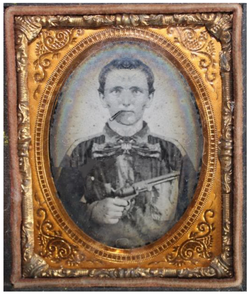 There are some people who are just mean. You can’t look at it any other way. Cullen Montgomery Baker was one of those mean men…a cold-blooded and ruthless killer who left a long trail of bodies across the American Frontier. Baker was a Confederate guerrilla during the Civil War, but he didn’t want to give up the fight once the war was over, so afterward he ambushed reconstructionists, killed former slaves, and generally terrorized the states of Texas and Arkansas for four years.
There are some people who are just mean. You can’t look at it any other way. Cullen Montgomery Baker was one of those mean men…a cold-blooded and ruthless killer who left a long trail of bodies across the American Frontier. Baker was a Confederate guerrilla during the Civil War, but he didn’t want to give up the fight once the war was over, so afterward he ambushed reconstructionists, killed former slaves, and generally terrorized the states of Texas and Arkansas for four years.
Born in Weakley County, Tennessee, on June 22, 1835, to John Baker and his wife, Elizabeth, his father was an honest but poor farmer who also owned cattle. The family moved to Clarksville, Arkansas soon after he was born. Times were no better there, so in 1839, after just a few years, the family moved to Texas, eventually settling in Davis County. There, things looked like they might get better when his father received a land grant of 640 acres, but even with the acreage, the family was still poor, and because of his homespun trousers and bare feet, Cullen was teased by students at school, probably triggering his anger. Though he was a slender and withdrawn youth, he began to fight back. It was at this time, that he obtained an old pistol and a rusty but workable rifle. He practiced diligently until he was very proficient with both weapons.
At the tender age of 15 years, Baker began to drink whiskey. Emboldened by alcohol, he began to challenge both boys and men who annoyed him to “go for your guns.” As often happens when people get hooked on alcohol, he spent much of his time in saloons, where his quick temper got him into several brawls. Soon, he was well known as a hard drinker, a braggart, and generally a quarrelsome and mean-spirited young man. He almost learned his lesson in one fight, when he was knocked unconscious by a man named Morgan Culp, who hit him in the head with a tomahawk. This incident seemingly calmed his temper for a little while, or maybe scared him a little bit, but that wouldn’t last.
Baker was rather a spontaneous man, and so some weeks later, on January 11, 1854, while still wearing a head bandage from the tomahawk incident, Baker married 17-year-old Martha Jane Petty and settled down to a quiet farming life. It looked like the marriage might have been the turnaround moment for him, but he grew tired of this routine and was back to his old ways just eight months later. One night when he was out drinking, he got into an argument with a teenager named Stallcup. As the discussion devolved, Baker became enraged. He grabbed a whip and beat the boy nearly to death. For that, Baker was charged with the crime. He went to the home of witness, Wesley Bailey, and shot him in both legs with a shotgun. He then left him lying in front of his house. Bailey died a few days later, but before Baker could be arrested for the murder, he fled to Perry County, Arkansas, where he hid out at the home of his mother’s brother, Thomas Young, for almost two years.
While there, not bothering to lay low, he stabbed a man named Wartham to death in an argument about horses in 1856 and fled back to Texas. His stay in Texas was short-lived, when he learned he was still wanted for murder in the killing of Bailey, so he returned to Arkansas. While he was gone, his wife Martha gave birth to a baby girl, Louisa Jane, on May 24, 1857. Returning to Texas briefly the following year, he retrieved his wife and daughter. Unfortunately, his wife died on July 2, 1860, and Baker took their child to Sulphur County, Texas. He left her with his in-laws, and that was the last he saw of her. I’m sure his in-laws were thankful for that.
In November 1861, Baker joined Company G of Morgan’s Regimental Cavalry to fight in the Confederate Army. In July 1862, he married a second time to Martha Foster, who was unaware he was wanted for murder. Baker’s name appears on the muster roll for September-October 1862, and he actually received pay through August 31, but by January 10, 1863, he had deserted and was listed on the muster roll as such.
It was at this point that Baker joined a guerilla group called the “Independent Rangers,” loosely associated with the Confederate Home Guard. My guess is that the Confederate regular army was a little “too tame” for his kind of fighting. The guerilla group suited his style better, as their objective was to pursue and capture deserters from the Confederate Army. That work held no real interest for Baker, but it allowed him a certain measure of freedom to do what he really wanted to do, which was to take advantage of most of the men being away at war and committing atrocities of intimidation, rape, theft, and violence. Any man who had property was considered an enemy and was declared to be a Union man to Baker, and therefore fair game. The attacks in some areas became so bad that everyone who could, left the area. Then, shortly after Baker joined the “Independent Rangers,” they began an ongoing feud with another band called the “Mountain Boomers,” who were Union guerrillas…basically having their own war between the North and South. Both bands ran throughout Arkansas, robbing, burning, and murdering indiscriminately…and fighting with each other.
In November 1864, a small band of mostly old men, women, and children, who were trying to escape from the turmoil, started west with their teams and valuables. When the group crossed the Saline River in the Ouachita Mountains, Cullen Baker and the Independent Rangers caught up to them. Baker’s story was that he and his men considered the group’s attempted escape “unpatriotic,” but, in reality, they needed little reason to harass them. When the group refused to return to their homes, Baker drew his pistol and shot and killed their leader. He then assured the rest of the group that he would not kill anyone else, if they agreed to return to their homes. But being the liar he was, as soon as the settlers returned to Baker’s side of the river, he led his 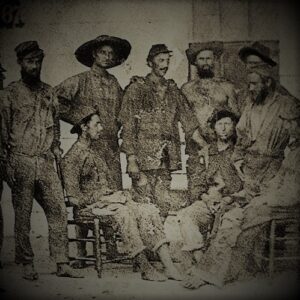 “Rangers” in shooting and killing nine other men and stealing all the valuables. The event became known locally as the Massacre of Saline.
“Rangers” in shooting and killing nine other men and stealing all the valuables. The event became known locally as the Massacre of Saline.
It was at this point that the local citizens had had enough. The began to organize and make active preparations to take out the murderous gang. However, being the stellar, brave men they were, when the ruffians got word of this, they ran, taking their booty and the many horses and mules they had stolen with them.
At the end of 1864, Baker was seen in a saloon wearing a Confederate hat in Spanish Bluffs, Arkansas. He was approached by four African American Union soldiers who asked for identification. With his pistol drawn, Baker turned to face them, shooting and killing a sergeant and the three other soldiers. One report tells that when the war was over, as he was making his way home, he came upon a group of travelers in Sevier County, Tennessee. In the group was a black woman who he began to verbally harass and then shot and killed her.
Following this rampage, he settled down with his wife Martha near the Sulphur River area in southwestern Arkansas, where he became the manager of the Line Ferry. Again, this break from the violence was short-lived. Martha soon took ill and died on March 1, 1866. Apparently, Baker very much-loved Martha and grieved her loss deeply. Still, losing his second wife didn’t stop him from proposing to her 16-year-old sister, Belle Foster, just two months later. Belle rejected his proposal and instead married a schoolteacher and political activist named Thomas Orr. This enrages Baker, who began to harass Orr, trying to pick fights with the man, hitting him over the head with a tree limb, and going to his school to ridicule, curse, and threaten the man in front of his students. I’m sure Belle Foster was thankful she married the man she did, after seeing the horrible acts of the man who had married her older sister.
Reconstruction had begun in Arkansas and Texas around this time, and Baker despised the idea. He and another outlaw named Lee Rames organized a gang that operated out of the Sulphur River bottoms near Bright Star, Arkansas. Baker continued his acts of robbery and murder, along with the Rames gang. They were said to have killed at least 30 people, many of whom were outnumbered, ambushed, or shot in the back. Baker and his gang also traveled to Texas, where he killed John Salmons in retaliation for the killing of Seth Rames, who was the brother of gang member Lee Rames. Baker also killed WG Kirkman, a Reconstruction official, and a man named George W Barron, who had previously taken part as a member of a posse hunting him. Baker was “happy” to kill anyone who annoyed him, or who might have annoyed someone he knew, or might have done the slightest thing against him…real or perceived. The gang continued their outlaw spree in Queen City, Texas, and Texarkana, Arkansas.
On June 1, 1867, he returned to Cass County. In need of supplies, Baker entered the Rowden General Store, helped himself to some items without paying. The proprietor, John Rowden rode with a shotgun to Baker’s house and demanded payment. Seemingly compliant, Baker said he would come back and pay him, but on June 5, he killed Rowden instead. Again, Baker fled to Arkansas, where he recognized by a Union sergeant when he boarded a ferry. He killed the Union officer, but a private was able to get away and reported the murder. With the eyewitness account, Baker became a hunted man, pursued relentlessly by Union forces.
On July 25, 1867, following an argument with several Union Soldiers near New Boston, Texas, which quickly escalated to violence, Baker was shot in the arm in a gunfight in which he killed army Private Albert E Titus. A $1,000 reward was set for his capture, dead or alive.
In December 1867, Baker went to Bright Star, Arkansas, where he met up with several men who were planning a raid on the farm of Howell Smith. They were upset because Smith had hired several freed slaves. In the attack, one of Smith’s daughters was stabbed, another clubbed, and a black man was shot and killed. Still, Smith resisted, and in the ensuing shootout, several of the raiders were wounded, including Baker, who was shot in the leg.
On October 24, 1868, Baker and his gang were reported to have been involved in the killings of Major P J Andrews, Lieutenant H F Willis, and an unnamed black man in Little Rock, Arkansas. Wounded in the attack was Sheriff Standel.
By this time, Baker’s co-leader, Lee Rames, began to get nervous about Baker’s leadership style and felt that his actions would lead to the downfall of the entire gang. Rames defied Baker, who backed down, and the gang broke up in December 1868. All members, except “Dummy” Kirby, sided with Rames. Baker and Kirby went to Bloomburg, Texas, to the house of Baker’s in-laws in January 1869. It would be there that Cullen Baker and “Dummy” Kirby would die on January 6, 1869.
Exactly how they were killed is unknown. One version says that “his father-in-law and friends laced a bottle of whiskey and some food with strychnine and both men died from poisoning. Afterward, their bodies were riddled  with bullets. Another version says that Thomas Orr, with whom Baker had long feuded, led a small band of men who ambushed Baker and Kirby at the Foster home, shooting and killing them.” In reality, it doesn’t matter how they died, because so many people were glad that Baker was gone, that after the men were killed, their bodies were dragged through the town of Bloomburg and then taken to the US Army outpost near Jefferson, where they were placed on public display. Thomas Orr was said to have collected some of the reward money offered for Baker. Baker was buried in the Oakwood Cemetery in Jefferson, Texas. Though he was a deserter from Morgan’s Squadron, the Confederate cavalry unit is shown on his grave marker.
with bullets. Another version says that Thomas Orr, with whom Baker had long feuded, led a small band of men who ambushed Baker and Kirby at the Foster home, shooting and killing them.” In reality, it doesn’t matter how they died, because so many people were glad that Baker was gone, that after the men were killed, their bodies were dragged through the town of Bloomburg and then taken to the US Army outpost near Jefferson, where they were placed on public display. Thomas Orr was said to have collected some of the reward money offered for Baker. Baker was buried in the Oakwood Cemetery in Jefferson, Texas. Though he was a deserter from Morgan’s Squadron, the Confederate cavalry unit is shown on his grave marker.
Some people have romanticized him for his defense of the “Southern honor,” but the reality is that Baker was a ruthless killer who killed anyone who angered him, regardless of their loyalties. It is thought that he killed between 50-60 people, and authorities and historians alike rank him among the most ruthless killers who ever lived.

 After the November 11, 1918 German surrender in World War I, the German fleet was interned at Scapa Flow under the terms of the Armistice of 11 November, while negotiations took place over its fate. There was talk of the fleet being divided between the Allied nations, and there were those who really wanted that, but this brought the fear that the British would seize the ships, and the Germans worried that if the German government at the time might rejected the Treaty of Versailles and resumed the war effort, the newly confiscated German ships could be used against Germany. Amid all the speculation, Admiral Ludwig von Reuter decided to scuttle the fleet.
After the November 11, 1918 German surrender in World War I, the German fleet was interned at Scapa Flow under the terms of the Armistice of 11 November, while negotiations took place over its fate. There was talk of the fleet being divided between the Allied nations, and there were those who really wanted that, but this brought the fear that the British would seize the ships, and the Germans worried that if the German government at the time might rejected the Treaty of Versailles and resumed the war effort, the newly confiscated German ships could be used against Germany. Amid all the speculation, Admiral Ludwig von Reuter decided to scuttle the fleet.
Scapa Flow was a naval base in the Orkney Islands in Scotland. When the German ships arrived, they had full crews and in all, there were more than 20,000 German sailors aboard, the number of sailors was reduced in the ensuing months. When the full fleet was at Scapa Flow, there were 74 ships there during negotiations between the Allies and Germany over a peace treaty that would become Versailles. The discussion was about what to do with the ships, since they didn’t really want Germany to have a full fleet ready, should they decide to wage war again. The French and Italians wanted a portion of the fleet, but the British wanted them destroyed. They were concerned about their own naval superiority, should the ships be distributed among the other Allied nations.
The Germans didn’t want their ships in the hand of their enemies, so Admiral Ludwig von Reuter began to prepare for the scuttling in May 1919, after hearing about the potential terms of the Versailles Treaty. Shortly before the treaty was signed on June 21, Reuter sent the signal to his men. The men began opening flood valves, smashing water pipes, and opening sewage tanks. As the scuttle was taking place, nine German crew members who abandoned ship and attempted to come ashore were shot by British forces. As the ships were being scuttled, the intervening British guard ships were able to beach some of the ships. In all, 52 of the 74 ships were sunk. While he wouldn’t say so out loud, British Admiral Wemyss was delighted that the ships were 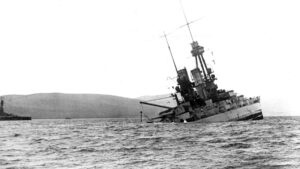
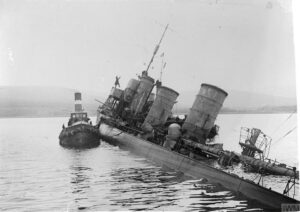 sunk, because that meant they wouldn’t be distributed to the French and Italians navies. Since the scuttling, many ships have been refloated and salvaged in the years since. Nevertheless, some remain in the seas at Scapa Flow. Those that remain are popular diving sites and a source of low-background steel.
sunk, because that meant they wouldn’t be distributed to the French and Italians navies. Since the scuttling, many ships have been refloated and salvaged in the years since. Nevertheless, some remain in the seas at Scapa Flow. Those that remain are popular diving sites and a source of low-background steel.

 In June of 1942, Flight Sergeant Dennis Copping, a 24-year-old British pilot, who was part of the 260 Squadron of the RAF Volunteer Reserves was tasked with flying P-40 Kittyhawk (serial code ET574), on a ferry flight to a neighboring British airbase to have the undercarriage repaired. The upcoming Summer Offensive that year, was to include the P-40s. Copping took off on June 28 and headed West. He was never seen again, even with extensive searches being undertaken. Both the aircraft and its pilot were reported missing. After a time, the search was called off, because they couldn’t find anything.
In June of 1942, Flight Sergeant Dennis Copping, a 24-year-old British pilot, who was part of the 260 Squadron of the RAF Volunteer Reserves was tasked with flying P-40 Kittyhawk (serial code ET574), on a ferry flight to a neighboring British airbase to have the undercarriage repaired. The upcoming Summer Offensive that year, was to include the P-40s. Copping took off on June 28 and headed West. He was never seen again, even with extensive searches being undertaken. Both the aircraft and its pilot were reported missing. After a time, the search was called off, because they couldn’t find anything.
The lost flight stayed a mystery for almost 70 years. Then, in April 2012, workers of a Polish Oil company discovered the remarkably well-preserved remains of a P-40. It’s quite likely that they not only had no idea how it could have come to be there, nor when. Nevertheless, the desert’s extremely dry conditions had basically ‘mummified” the P-40, as it only showed minimal rust and decay.
The wings of the P-40 were half-buried under the sand, but they were still in very good condition, with the exception of the fact that the fabric-covered control surfaces had rotten away. Even the cockpit was still somewhat preserved, and the aircraft still had live ammunition loaded in the magazines of its six machine guns.
When the authorities were called in, they were easily able to link the downed P-40 Kittyhawk to Dennis  Copping, because of its relatively good condition. They finally knew what had happened to Flight Sergeant Dennis Copping and his Kittyhawk exactly 69 years, 9 months, and 14 days later. The only thing missing was the pilot. It was then assumed that Copping had survived the crash, but where was he? The only thing they could assume was that he must have tried to walk out. The problem is that Copping was lost and alone in the middle of the largest desert on Earth. They began the search again, but this time with the plane as a starting point.
Copping, because of its relatively good condition. They finally knew what had happened to Flight Sergeant Dennis Copping and his Kittyhawk exactly 69 years, 9 months, and 14 days later. The only thing missing was the pilot. It was then assumed that Copping had survived the crash, but where was he? The only thing they could assume was that he must have tried to walk out. The problem is that Copping was lost and alone in the middle of the largest desert on Earth. They began the search again, but this time with the plane as a starting point.
They found a small makeshift camp built next to the aircraft. Near it was the plane’s battery and radio. This meant that Copping probably attempted to broadcast for help. Unfortunately, the radio, or at least the internal workings of it had been destroyed by the crash landing. Finally, unable to call for help, Copping knew he would have to leave the plane and go for help. The teams continued their search, and a group of Italian historians uncovered a number of human bones five kilometers from the crash site. However, it was decided that those bones probably “did not belong” to Copping as they were “too old” to be his. Interestingly, the bones were never tested for any DNA. The historians were also able to find a section of the parachute, a keyfob, and a buckle stamped ‘1939,’ which were things Copping might have had with him at the time of his death.
Because of the desert’s dry conditions, the ET574 Kittyhawk was able to be fully restored. Of course, given the 
 years and the fact that it was a crash, the restoration is far from perfect. and it sports a historically inaccurate camouflage scheme. Maybe someday, it will be restored to a historically accurate condition. Nevertheless, it is the last surviving example of a Desert Air Force P-40 Kittyhawk in existence. The mystery was finally solved.
years and the fact that it was a crash, the restoration is far from perfect. and it sports a historically inaccurate camouflage scheme. Maybe someday, it will be restored to a historically accurate condition. Nevertheless, it is the last surviving example of a Desert Air Force P-40 Kittyhawk in existence. The mystery was finally solved.
 The Civil War was fought for a number of reasons, but the biggest reason was the slave issue. During the war between the North and South, came President Lincoln’s Emancipation Proclamation on January 1, 1863, and the freedom of the slaves…well, most of them, anyway. Of course, things like this come in stages. The Proclamation had the effect of “changing the legal status of more than 3.5 million enslaved African Americans in the secessionist Confederate states from enslaved to free. As soon as slaves escaped the control of their enslavers, either by fleeing to Union lines or through the advance of federal troops, they were permanently free. In addition, the Proclamation allowed for former slaves to ‘be received into the armed service of the
The Civil War was fought for a number of reasons, but the biggest reason was the slave issue. During the war between the North and South, came President Lincoln’s Emancipation Proclamation on January 1, 1863, and the freedom of the slaves…well, most of them, anyway. Of course, things like this come in stages. The Proclamation had the effect of “changing the legal status of more than 3.5 million enslaved African Americans in the secessionist Confederate states from enslaved to free. As soon as slaves escaped the control of their enslavers, either by fleeing to Union lines or through the advance of federal troops, they were permanently free. In addition, the Proclamation allowed for former slaves to ‘be received into the armed service of the 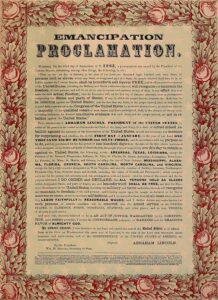 United States.’ The Emancipation Proclamation played a significant part in the end of slavery in the United States.”
United States.’ The Emancipation Proclamation played a significant part in the end of slavery in the United States.”
This all seemed simple enough, if the slave could escape, but they had to know about the Emancipation Proclamation, and the slaveowners in Texas decided not to tell them that they could be free. The Proclamation had the effect of changing the legal status of more than 3.5 million enslaved African Americans in the secessionist Confederate states from enslaved to free. As soon as slaves escaped the control of their enslavers, either by fleeing to Union lines or through the advance of federal troops, they were permanently free. In addition, the Proclamation allowed for former slaves to “be received into the armed service of the United States.” The people of Texas kept their slaves in the dark about everything, including the end of the Civil War Major General Gordon Granger, who had been tasked with enforcing the Emancipation Proclamation. Granger arrived in Galveston until June 19, 1865, where he formally announced that the slaves were free according to 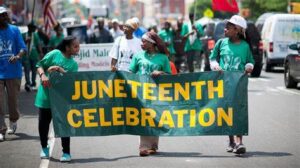 General Order Number 3. It was the first time many of them had heard this good news. Texans began celebrating June 19th as Juneteenth since that time. It became a state holiday in 1979.
General Order Number 3. It was the first time many of them had heard this good news. Texans began celebrating June 19th as Juneteenth since that time. It became a state holiday in 1979.
On April 8, 1864, by the necessary two-thirds vote, the Senate passed the 13th Amendment. The House of Representatives passed it on January 31, 1865, and the required three-fourths of the states ratified it on December 6, 1865. The amendment made slavery and involuntary servitude unconstitutional, “except as a punishment for a crime.”

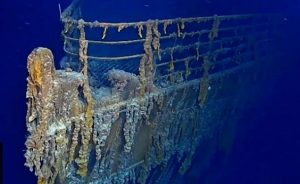 When RMS Titanic sank to the ocean floor after hitting an iceberg on April 15, 1912, it immediately became a “media sensation” for lack of a better term. Everyone wanted to know more about the ship. They wanted first to find it, and when it was finally located, everyone wanted to see and hear more about it. Once submarines were created to be able to go to that depth, the wreck was researched and view the world over. Still, people couldn’t “visit” the ship. It became an obsession similar I suppose to a trip to outer space. Still, you knew that at some point, someone would pave the way for excursions to the site of the Titanic wreck and with that would come the eventual possibility for anyone with enough money to purchase a ticket to make the journey for the sake of being able to actually say they “had been there.”
When RMS Titanic sank to the ocean floor after hitting an iceberg on April 15, 1912, it immediately became a “media sensation” for lack of a better term. Everyone wanted to know more about the ship. They wanted first to find it, and when it was finally located, everyone wanted to see and hear more about it. Once submarines were created to be able to go to that depth, the wreck was researched and view the world over. Still, people couldn’t “visit” the ship. It became an obsession similar I suppose to a trip to outer space. Still, you knew that at some point, someone would pave the way for excursions to the site of the Titanic wreck and with that would come the eventual possibility for anyone with enough money to purchase a ticket to make the journey for the sake of being able to actually say they “had been there.”
When Titan was created, that dream became a reality…for a time. Titan was a submersible operated by the private American tourism and expeditions company OceanGate. The company was founded in 2009 by Stockton Rush and Guillermo Söhnlein. Beginning in 2010, OceanGate took paying customers in leased commercial submersibles off the coast of California, in the Gulf of Mexico, and in the Atlantic Ocean. OceanGate was in Everett, Washington. The trips were profitable, but Rush couldn’t get past the thought that visiting shipwreck sites would be a great way to generate media attention. OceanGate had gone to a few other shipwrecks, including its 2016 dive to the wreck of Andrea Doria aboard their other submersible Cyclops 1. Then in 2019, Rush told Smithsonian magazine: “There’s only one wreck that everyone knows … If you ask people to name something underwater, it’s going to be sharks, whales, Titanic.” And in the end, all three can prove deadly.
The unfortunate reality was that while Titan looked very cool and would likely be just the media draw that Rush had hoped for, the materials used in its construction were not what would be needed to make it a safe vehicle at the depth of the Titanic. Rush didn’t see that the vehicle was dangerous, even though several people told him it was unsafe. Some people who had planned to go even cancelled before that fateful trip, but unfortunately not all od them. In the end, five people, including Rush made the trip to see Titanic for themselves. Also aboard the submersible were Paul-Henri Nargeolet, a French deep-sea explorer and Titanic expert, Hamish Harding, a British businessman; Shahzada Dawood, a Pakistani-British businessman and Dawood’s son, Suleman. One hour and 45 minutes into the dive, communication between Titan and its mother ship, MV Polar Prince, was lost. Everyone knew what that meant, but they couldn’t give up hope. When Titan 
 failed to resurface at the scheduled time later that day the authorities were notified. Four days later, a remotely operated underwater vehicle (ROV) discovered a debris field containing parts of Titan, about 1,600 feet from the bow of the Titanic. Of course, all onboard were crushed to death instantly. They would not have felt a thing.
failed to resurface at the scheduled time later that day the authorities were notified. Four days later, a remotely operated underwater vehicle (ROV) discovered a debris field containing parts of Titan, about 1,600 feet from the bow of the Titanic. Of course, all onboard were crushed to death instantly. They would not have felt a thing.
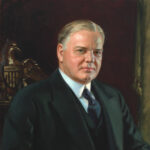
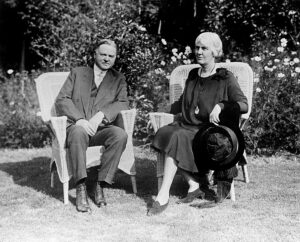 For nearly a month beginning June 17, 1900, the man who would become President Herbert Hoover and his wife, Lou were caught up in what was to become known as the Boxer Rebellion in China. During the Boxer Rebellion, the community of foreigners the Hoovers lived in, in the city of Tianjin, was besieged and under attack. You might wonder how a future president could be caught up in such a situation, but remember, he wasn’t president yet. He was a citizen. After they were married in Monterey, California, on February 10, 1899, Herbert and Lou Hoover left on a honeymoon cruise to China. Following their honeymoon, Hoover started his new job as a mining consultant to the Chinese emperor with the consulting group Bewick, Moreing and Company.
For nearly a month beginning June 17, 1900, the man who would become President Herbert Hoover and his wife, Lou were caught up in what was to become known as the Boxer Rebellion in China. During the Boxer Rebellion, the community of foreigners the Hoovers lived in, in the city of Tianjin, was besieged and under attack. You might wonder how a future president could be caught up in such a situation, but remember, he wasn’t president yet. He was a citizen. After they were married in Monterey, California, on February 10, 1899, Herbert and Lou Hoover left on a honeymoon cruise to China. Following their honeymoon, Hoover started his new job as a mining consultant to the Chinese emperor with the consulting group Bewick, Moreing and Company.
In 1900, a Chinese secret organization called the Society of the Righteous and Harmonious Fists led an uprising in northern China against the spread of Western and Japanese influence there. The uprising would become known as the Boxer Rebellion of 1900. The rebels performed calisthenics rituals and martial arts that they believed would give them the ability to withstand bullets and other forms of attack. Westerners referred to these rituals as shadow boxing, leading to the Boxers nickname. They also killed foreigners and Chinese Christians, and they destroyed foreign property.
The Boxers besieged the foreign district of China’s capital city Beijing, which was called Peking then, from June to August. It was at that point that an international force that included American troops ended the uprising. By the terms of the Boxer Protocol, which officially ended the rebellion in 1901, China agreed to pay more than $330 million in reparations. In the end, America returned the money it received from China after the Boxer Rebellion, on the condition it be used to fund the creation of a university in Beijing. Other nations involved later remitted their shares of the Boxer indemnity too.
Western nations and Japan had forced China’s ruling Qing dynasty to accept wide foreign control over the country’s economic affairs by the end of the 19th century. China had resisted the efforts throughout the Opium  Wars of 1839-1842 and 1856-1860, by means of popular rebellions and the Sino-Japanese War, but without a modernized military, China had suffered millions of casualties.
Wars of 1839-1842 and 1856-1860, by means of popular rebellions and the Sino-Japanese War, but without a modernized military, China had suffered millions of casualties.
John Hay, the US Secretary of State from 1898 to 1905, began to implement an “Open Door Policy” to push for American and European influence over the Chinese trade and economic partnerships. The Open Door Policy called for a system of equal trade and investment and to guarantee the territorial integrity of Qing China. The policy was met with indifference or resistance by other key players, including the Qing Empress Dowager Tzu’u Hzi, but it brought continued Western influence over domestic Chinese affairs, and it set the stage for the rebellion.
The Boxers came from various parts of society, but many were peasants, particularly from Shandong province, which had been struck by natural disasters such as famine and flooding. These things made them particularly volatile. In the 1890s, China had given territorial and commercial concessions in this area to several European nations, and the Boxers blamed their poor standard of living on foreigners who were colonizing their country.
The siege stretched into weeks, and the diplomats (including the Hoovers), their families, and guards suffered through hunger and degrading conditions as they fought to keep the Boxers at bay, while the Western powers and Japan organized a multinational force to crush the rebellion. It is thought that several hundred foreigners and several thousand Chinese Christians were killed during this time. On August 14, after fighting its way through northern China, the rescue began, when an international force of approximately 20,000 troops from eight nations, including Austria-Hungary, France, Germany, Italy, Japan, Russia, the United Kingdom and the United States arrived to take Beijing. The Boxer Rebellion formally ended with the signing of the Boxer Protocol on September 7, 1901. “By terms of the agreement, forts protecting Beijing were to be destroyed, Boxer and Chinese government officials involved in the uprising were to be punished, foreign legations were permitted to 
 station troops in Beijing for their defense, China was prohibited from importing arms for two years and it agreed to pay more than $330 million in reparations to the foreign nations involved.” The Qing dynasty, which was established in 1644, was weakened by the Boxer Rebellion. Following an uprising in 1911, the dynasty came to an end and China became a republic in 1912.
station troops in Beijing for their defense, China was prohibited from importing arms for two years and it agreed to pay more than $330 million in reparations to the foreign nations involved.” The Qing dynasty, which was established in 1644, was weakened by the Boxer Rebellion. Following an uprising in 1911, the dynasty came to an end and China became a republic in 1912.

 We all have one, and some of us were blessed with two, either a father-in-law, or a stepdad, or even a mentor for those who never knew their own dad. I was one of those who were blessed with a wonderful dad and a wonderful father-in-law, and I have always felt incredibly blessed to have had both. My dad, Allen Spencer was such a gentle and loving dad. He really was the perfect “Girl Dad” and his girls were his princesses. We grew up knowing that we were among the most blessed people on Earth. I met my father-in-law, Walt Schulenberg in 1974, and he immediately welcomed me into their home. That welcome lasted until the day he died, and I was so blessed by this man. I love and miss both my dads very much.
We all have one, and some of us were blessed with two, either a father-in-law, or a stepdad, or even a mentor for those who never knew their own dad. I was one of those who were blessed with a wonderful dad and a wonderful father-in-law, and I have always felt incredibly blessed to have had both. My dad, Allen Spencer was such a gentle and loving dad. He really was the perfect “Girl Dad” and his girls were his princesses. We grew up knowing that we were among the most blessed people on Earth. I met my father-in-law, Walt Schulenberg in 1974, and he immediately welcomed me into their home. That welcome lasted until the day he died, and I was so blessed by this man. I love and miss both my dads very much.
My husband, Bob Schulenberg is also a “Girl Dad” and was a huge blessing to our girls. Of course, they usually had him wrapped around their little fingers, but his didn’t seem to mind. They were his little girls, and he loved them more than words could say. When our girls got married, Bob received the sons he never had. The biggest blessings of the husbands of our daughters, Kevin Petersen and Travis Royce, is that they have stood by our 

 girls and their children. They have made them so happy, and that makes us very happy. With the marriages of our girls, we were introduced to the world of boys. My sisters thought it was probably a “culture shock” for us, since we didn’t have sons, and they were likely right. Yes, boys are quite different, but Chris Petersen, Caalab Royce, and Josh Petersen, have blessed our lives in more ways than they know, and we were blessed with one granddaughter, Shai Royce.
girls and their children. They have made them so happy, and that makes us very happy. With the marriages of our girls, we were introduced to the world of boys. My sisters thought it was probably a “culture shock” for us, since we didn’t have sons, and they were likely right. Yes, boys are quite different, but Chris Petersen, Caalab Royce, and Josh Petersen, have blessed our lives in more ways than they know, and we were blessed with one granddaughter, Shai Royce.
Of our grandsons, we now have two who have families of their own. Chris Petersen and his wife, Karen have three children, Cambree, Caysen, and Cyler. Josh Petersen and his wife, Athena have two sons, Justin and Axel, and one child on the way. These young men have been a great blessing to their families, and I can’t tell you how proud of them I am. They work hard and help their wives with the kids, and their kids are all love their daddies so much. Their families couldn’t ask for better husbands and dads. They love their families so much.

 Being a dad is so much more that having kids. Being a dad is about being a provider, mentor, friend, protector, and playmate. After a long day at work, a good dad comes home to spend time with his family, and not to push them away. They may be tired, but their families love them, and they have missed them all day. They want to spend time with them. These guys are good dads, every single one of them, and that is why their families are so blessed. Happy Father’s Day to all the dads in my family, here and in heaven, and all dads everywhere. Have a great day. We, your families love you very much!!
Being a dad is so much more that having kids. Being a dad is about being a provider, mentor, friend, protector, and playmate. After a long day at work, a good dad comes home to spend time with his family, and not to push them away. They may be tired, but their families love them, and they have missed them all day. They want to spend time with them. These guys are good dads, every single one of them, and that is why their families are so blessed. Happy Father’s Day to all the dads in my family, here and in heaven, and all dads everywhere. Have a great day. We, your families love you very much!!

 My grandnephew, James Renville and his wife, Manuela have been having a very good year. Last year, just shortly after James’ birthday, they traveled to Colombia so that James could meet his new extended family for the first time. When he and Manuela were married on July 21, 2021, her family could not travel to attend, because of Covid restrictions. They were sad that they couldn’t come, but they loved James, whom they had spoked to over Skype a number of times, so they were happy they were getting married. James was very excited to meet them, and he loved them instantly. As it turns out, James and his mother-in-law, Consuelo share the same birthday, and Manuela’s sister, Sarah is the day before. (Happy birthday to Consuelo and Sarah too) They were excited that James and Manuela were coming and had made plans to have a big birthday bash for the two of them.
My grandnephew, James Renville and his wife, Manuela have been having a very good year. Last year, just shortly after James’ birthday, they traveled to Colombia so that James could meet his new extended family for the first time. When he and Manuela were married on July 21, 2021, her family could not travel to attend, because of Covid restrictions. They were sad that they couldn’t come, but they loved James, whom they had spoked to over Skype a number of times, so they were happy they were getting married. James was very excited to meet them, and he loved them instantly. As it turns out, James and his mother-in-law, Consuelo share the same birthday, and Manuela’s sister, Sarah is the day before. (Happy birthday to Consuelo and Sarah too) They were excited that James and Manuela were coming and had made plans to have a big birthday bash for the two of them.
James loved spending time with his in-laws, and he said that Consuelo and Manuela’s dad, Edwin took  such good care of them. They were so pleased with James, and the showed him such amazing hospitality. Consuelo is an excellent cook, and she spoiled both them with delicious meals. Cooking is her way of showing great love for her family, so James and Manuela really felt the love.
such good care of them. They were so pleased with James, and the showed him such amazing hospitality. Consuelo is an excellent cook, and she spoiled both them with delicious meals. Cooking is her way of showing great love for her family, so James and Manuela really felt the love.
Manuela loved showing James where she grew up along with other special places in her beautiful home country. They had such a marvelous time, and they are already making plans to go again, as soon as they can get it worked out. James loves to travel, so having extended family in Colombia is very special to him. I’m sure there will be many trips there in the future. Consuelo took a real liking to James, and I know they will be lifelong friends too. James has kind and loving heart, so I am not surprised that she loves him already. James and Manuela took a trip to Marco Island Florida in May and had a great time there too. Taking a break from everyday life to enjoy some fun in the sun together.

 James has been moving into a new phase in his life. He and Manuela are buying their first home, and it is very special to James, because it is the home he grew up in. After she remarried, James’ mom, Toni Chase kept the old place and rented it to her sister, Elizabeth Masterson. Now, Elizabeth wants to buy a place of her own, so James jumped at the chance of owning his childhood home. He is excited about renovating it with Manuela, and making it their own, with their own tastes and touches. James has told his mom several times this year, that he is incredibly blessed!! He has a great job!! A great wife!! A great family!! And a great life!! Today is James’ birthday. Happy birthday James!! Have a great day!! We love you!!
James has been moving into a new phase in his life. He and Manuela are buying their first home, and it is very special to James, because it is the home he grew up in. After she remarried, James’ mom, Toni Chase kept the old place and rented it to her sister, Elizabeth Masterson. Now, Elizabeth wants to buy a place of her own, so James jumped at the chance of owning his childhood home. He is excited about renovating it with Manuela, and making it their own, with their own tastes and touches. James has told his mom several times this year, that he is incredibly blessed!! He has a great job!! A great wife!! A great family!! And a great life!! Today is James’ birthday. Happy birthday James!! Have a great day!! We love you!!

 When my grandfather first met Chief Red Cloud, it was an eye-opening experience for sure. I’m not exactly sure how old Grandpa was at the time, but since Red Cloud died when my grandfather was 16 years old, I have a timeframe to start with. Red Cloud was born near the forks of the Platte River in 1820 (exact date is unknown). He was one of a family of nine children whose father, an able and respected warrior. Red Cloud lived in an exemplary life. He was faithful to one wife all his days and was a devoted father to his children. He wanted great things for his only son, known as Jack Red Cloud. He wanted his sone to be a great warrior too and started him on the warpath at the age of fifteen. Of course, at this point, Red Cloud didn’t realize that the days of Indian warfare were very close to an end. Among the chiefs of his era, Red Cloud was known as a quiet man, simple and direct in speech, courageous in action, an ardent lover of his country. He possessed all the manly qualities characteristic of the American Indian in his best days. Red Cloud lived a long life and died on December 10, 1909, of natural causes.
When my grandfather first met Chief Red Cloud, it was an eye-opening experience for sure. I’m not exactly sure how old Grandpa was at the time, but since Red Cloud died when my grandfather was 16 years old, I have a timeframe to start with. Red Cloud was born near the forks of the Platte River in 1820 (exact date is unknown). He was one of a family of nine children whose father, an able and respected warrior. Red Cloud lived in an exemplary life. He was faithful to one wife all his days and was a devoted father to his children. He wanted great things for his only son, known as Jack Red Cloud. He wanted his sone to be a great warrior too and started him on the warpath at the age of fifteen. Of course, at this point, Red Cloud didn’t realize that the days of Indian warfare were very close to an end. Among the chiefs of his era, Red Cloud was known as a quiet man, simple and direct in speech, courageous in action, an ardent lover of his country. He possessed all the manly qualities characteristic of the American Indian in his best days. Red Cloud lived a long life and died on December 10, 1909, of natural causes.
Red Cloud, like most chiefs was a warrior in his day. He was famous for Red Cloud’s War that took place between 1866 and 1868. Nevertheless, Red Cloud was a wise man, and he saw that if his people were going to survive, they would have to make peace with and learn to coexist with the White Man. He was also a man who wanted peace. In 1887, he opposed the Dawes Act, which broke up communal tribal holdings and allocated 160-acre plots of land for subsistence farming to heads of families on tribal rolls. Then, the US declared additional communal tribal lands as excess and sold them to immigrant settlers. In 1889, Red Cloud opposed a treaty to sell more of the Lakota land. Red Cloud and Sitting Bull steadfastly opposed the 1889 treaty, but government agents obtained the necessary signatures for approval only through cheating, such as using the signatures of children. Red Cloud negotiated strongly with Indian Agents such as Dr Valentine McGillycuddy, who was an honest man and highly respected by the Lakota. For the rest of his life, Red Cloud advocated for 
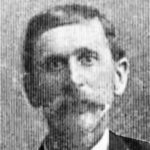
 Native American rights to the Black Hills. During this time, June 15, 1893, to be exact, my grandfather was born in Springfield, South Dakota. The advocating Red Cloud did in those years was less violent, and more intellectual, although not any more fruitful than any other advocating he did. There were very few White Men he trusted…among them, my great grandfather, Cornelius Byer.
Native American rights to the Black Hills. During this time, June 15, 1893, to be exact, my grandfather was born in Springfield, South Dakota. The advocating Red Cloud did in those years was less violent, and more intellectual, although not any more fruitful than any other advocating he did. There were very few White Men he trusted…among them, my great grandfather, Cornelius Byer.
My great grandfather was invited to the Pow Wows and invited to sit in on their tribal meetings. He was also so respected by the Native Americans, that when he was dying, they all came to see him…bringing their wives and children to tell him goodbye. When he passed away, they followed him as far as they could toward his final resting place in Iowa. That said, between the year of my grandfather’s birth and the death of Red Cloud, I believe when my grandfather was about 12 years old, my great grandfather took my grandfather to visit Red Cloud. The Native American culture was quite different than the White Man’s. When Great Grandpa and Grandpa went into Red Cloud’s teepee, he was sitting there under a blanket. Red Cloud stood up to get a peace pipe to offer to Great Grandpa and the other men in the room. That was all fairly normal, even for my grandfather, but the fact that Red Cloud was naked was not something my grandfather was used to. In fact, my Aunt Sandy tells me that she doesn’t remember ever seeing her dad shirtless. He always wore at least a t-shirt, whether indoors or outdoors, in Summer or Winter. I’m sure Grandpa’s eyes were as big as saucers, until his dad nudged him, basically telling him not to stare. Grandpa sat quietly while the men talked, and then the peace pipe was lit. As it was handed around the circle, Red Cloud handed it to my grandfather. My grandfather looked at his dad, and Great Grandpa nodded his head. With that one motion, my grandfather was allowed to 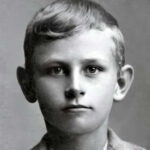
 take his first puff of a peace pipe. I don’t know if Grandpa ever met with Red Cloud again, although I assume he did, and I don’t know if he ever smoked a peace pipe again either, but he did that day, and it was a moment in his life that he never forgot. It wouldn’t surprise me to find out that he smoked the peace pipe again either. It was a story he told to his children many times through the years. It was a sign of respect from the Lakota toward my grandpa, and from my grandpa toward them. Today is the 131st anniversary of my grandfather’s birth. Happy birthday in Heaven, Grandpa Byer. We love and miss you very much.
take his first puff of a peace pipe. I don’t know if Grandpa ever met with Red Cloud again, although I assume he did, and I don’t know if he ever smoked a peace pipe again either, but he did that day, and it was a moment in his life that he never forgot. It wouldn’t surprise me to find out that he smoked the peace pipe again either. It was a story he told to his children many times through the years. It was a sign of respect from the Lakota toward my grandpa, and from my grandpa toward them. Today is the 131st anniversary of my grandfather’s birth. Happy birthday in Heaven, Grandpa Byer. We love and miss you very much.

